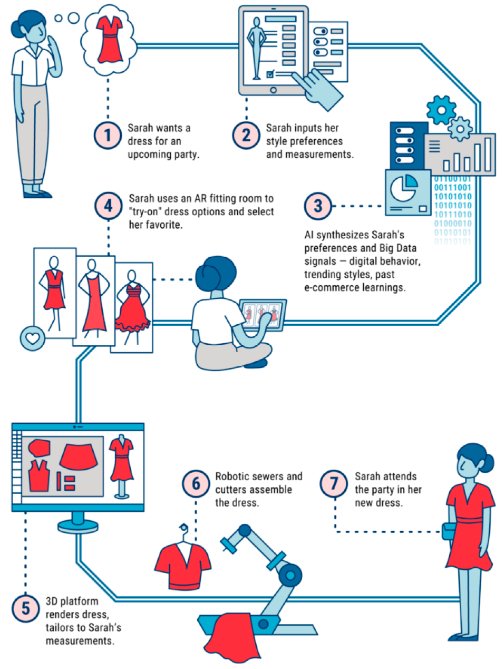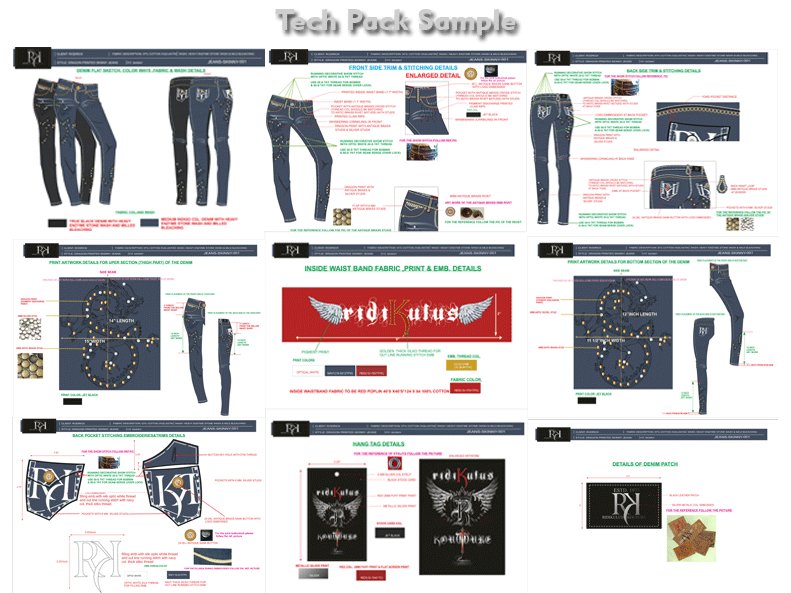Embark on a journey through the heart of active wear factories. This guide illuminates the path for designers, revealing crucial strategies and industry insights for successful collaborations in the business athletic wear sector.

Active Wear factories are powerhouses of innovation and productivity. They house advanced machinery like CNC cutters and seamless knitting tech.
Experts in fabric technology, like Dri-FIT and Gore-Tex, work here. These facilities operate on strict quality control protocols, ensuring every garment meets high standards. Skilled workers, from cutters to sewers, bring designs to life with precision.
Each facility produces thousands of units daily, contributing significantly to the industry's supply chain. Modern Active Wear factories are vital in shaping the future of athletic apparel.
Active wear factories blend utility and aesthetics. Seamless sports integration of form and function defines this style. The fusion is evident in every stitch. Cotton blends meet synthetic fibers for comfort and durability. Breathable fabrics with stretchability are key. Factories prioritize ergonomic designs.
Each piece is a testament to modern style, balancing tradition and innovation. Minimalism drives the design ethos. Functional details enhance style, not overpower it.
Selecting fabrics is a meticulous process. Performance is paramount. Active wear requires fabrics that endure. Sweat-resistant, quick-drying materials are preferred. Nylon, polyester, and spandex dominate selections. Fabric weight varies, targeting different activities. Textile innovation is ongoing.
Eco-friendly materials are gaining momentum. Factories experiment with blends for optimal performance. Each fabric choice is a commitment to quality and sustainability.
Color choices reflect brand identity. Active wear factories consider psychological impacts. Bright colors for energy are muted tones for calmness. Seasonal trends influence palette selections. However, classic colors remain foundational. Dyeing processes are environmentally conscious.
Consistency in shades across different fabrics is crucial. Color fastness is tested rigorously. Factories collaborate with designers for unique hues. Each color is a statement of the brand's vision.
Precision in fit is non-negotiable. Active wear must complement body movements. Factories employ advanced measurement techniques. 3D body scanning is becoming standard. Fit trials are extensive.
Adjustments are meticulous. Comfort and performance are balanced. Sizes cater to a diverse demographic. Attention to seam placement reduces discomfort. High-quality elastic materials ensure snug fits. Each garment is crafted to feel like a second skin.
Innovation drives active wear design. Factories are hotbeds of creativity. They integrate technology and fashion. Wearable tech is incorporated into fabrics. UV protection and moisture-wicking properties are standard. Designers and engineers collaborate closely.
Prototyping is rapid and iterative. Consumer feedback fuels innovation. Every design is a step towards the future of active wear.
Factories stay ahead of market trends. Real-time data informs production decisions. Social media trends influence designs. Collaboration with influencers is common. Sustainability is a growing trend.
Factories adapt to changing consumer preferences quickly. Agile manufacturing processes are employed. Limited edition releases test market reactions. Every trend is an opportunity for innovation and growth.
Maintaining brand consistency is key. Factories uphold brand ethos in every piece. Quality control is stringent. Brand guidelines are religiously.
Consistency extends beyond products to packaging. Employee training emphasizes brand values. Continuous improvement processes are in place. Factories are brand ambassadors. Every product is a reflection of the brand's promise and integrity.

The production lifecycle in Active Wear factories is a detailed process. It starts with design conceptualization, where ideas take shape. Next, material selection is crucial, with a focus on performance fabrics. Patterns are then cut using precision technology.
Sewing follows, assembling pieces into final form. Quality checks are rigorous, ensuring each item meets standards. Finally, packaging and distribution make these garments ready for active lifestyles. This cycle is the backbone of Active Wear manufacturing.
Idea generation in Active Wear factories is a dynamic process. Teams brainstorm, blending functionality with style. They draw inspiration from sports, technology, and fashion trends.
This stage shapes the foundation of Active Wear lines. Here, creativity meets practicality, forming the blueprint of innovative athletic wear.
Material sourcing in Active Wear factories is a meticulous task. They select fabrics for performance, comfort, and durability. Choices include advanced synthetics and sustainable materials.
This stage is vital, as the right fabric enhances both function and appeal. Active Wear's quality starts with superior material selection.
Prototype development is a critical phase in Active Wear factories. Here, initial designs come to life. It involves testing different materials, cuts, and stitches. Prototypes are revised repeatedly until perfect. This process ensures the final product meets exacting standards.
Pattern making in Active Wear factories combines art and precision. Skilled pattern makers create templates for each garment piece. They use software and manual skills for accuracy.
This stage is crucial for ensuring the perfect fit and style. Patterns form the skeleton of the Active Wear pieces.
Sample testing in Active Wear factories is rigorous. Each prototype undergoes tests for fit, durability, and performance. Feedback from this stage leads to adjustments.
Testing ensures the final product can withstand intense athletic use. It's a step where theoretical designs confront real-world conditions.
Quality checks in Active Wear factories are non-negotiable. They scrutinize every detail, from stitching to fabric strength. Quality control teams ensure each item aligns with brand standards.
This final stage guarantees that the Active Wear leaving the factory is flawless. Quality checks uphold the brand's reputation for excellence.
|
Manufacturing Process Stages |
Description |
Key Equipment/Tools |
Quality Metrics |
Time Frame |
Cost Implications |
Outcome |
|
Idea Generation |
Brainstorming designs & concepts |
Design software, mood boards |
Creativity Index |
1-2 weeks |
Low |
Conceptual Design |
|
Material Sourcing |
Selecting suitable fabrics |
Fabric catalogs, supplier contacts |
Fiber quality, durability |
2-4 weeks |
Moderate |
Fabric Inventory |
|
Prototype Development |
Creating initial model |
Sewing machines, 3D printers |
Fit, comfort |
4-6 weeks |
High |
Wearable Prototype |
|
Pattern Making |
Developing cut templates |
CAD software, pattern paper |
Precision, repeatability |
1-2 weeks |
Low |
Production Patterns |
|
Sample Testing |
Assessing prototype performance |
Testing equipment, focus groups |
Functionality, appeal |
2-3 weeks |
Moderate |
Refined Sample |
|
Quality Checks |
Final product inspection |
Quality control checklists |
Defect rate, compliance |
1 week |
Low |
Market-Ready Product |
Table on What Is The Manufacturing Process of Active Wear!

In active wear factories, design clarity is key. Tech packs bring vision to life. They contain precise measurements, fabric choices, and stitching details. This clarity streamlines production.
It ensures that every piece matches the designer's intent. It's the blueprint for quality active wear. Designers and manufacturers rely on these documents. They turn abstract ideas into tangible products.
Accurate specifications are vital. Tech packs list every thread, zipper, and seam. They define the fabric's weight and stretch. These details matter. They determine comfort and durability.
Without them, garments might fail in real-world use. Every millimeter counts in active wear. Tech packs ensure that nothing is left to chance.
Efficiency drives active wear production. Tech packs serve as guides. They minimize guesswork on the factory floor. Every step is outlined. Time is saved. Resources are used wisely.
This efficiency leads to faster turnaround times. It's essential for meeting market demands. Tech packs are the unsung heroes of smooth operations.
Errors cost time and money. In active wear production, precision is non-negotiable. Tech packs reduce mistakes. They provide clear instructions. Every cut and stitch is accounted for.
This reduces the risk of errors. It enhances overall quality. With tech packs, factories produce consistent, reliable active wear.
Cost control is crucial. Tech packs help in budgeting. They list all materials and labor needed. This helps in forecasting expenses. It prevents overordering and waste. Cost-effective production is the goal. Tech packs are the roadmap. They balance quality with affordability. This is key in a competitive market.
Aligning with suppliers is vital. Tech packs bridge communication gaps. They ensure everyone is on the same page. Specifications, timelines, and expectations are clear.
This alignment is crucial for smooth production. It fosters strong relationships. Suppliers become partners in success. Tech packs make this possible.
Sketches are the vision in a tech pack. They depict the active wear's design. Every line shows a cut or a contour. In factories, these sketches guide production. They turn abstract ideas into real garments. Sketches are crucial for precision. They ensure the final product matches the designer's vision.
Measurements are the backbone of a tech pack. They dictate the size and fit of active wear. Precise measurements ensure comfort and function. In factories, they guide cutting and sewing.
Even a small deviation can alter fit. Measurements maintain consistency in production. They are critical for quality control.
Materials define the performance of active wear. Tech packs list fabric types, weights, and stretches. This information guides factories in sourcing. The right material affects durability and comfort. It influences how the garment feels and functions. Material choice is a key decision in active wear design.
Trims add functionality and style to active wear. Zippers, buttons, and drawstrings are examples. They are detailed in the tech pack. Trims must be both practical and aesthetic.
They contribute to the garment's overall appeal. In factories, trims are selected for durability and ease of use.
Stitching details are vital in a tech pack. They specify seam types and thread quality. This ensures durability and comfort. Stitching affects the garment's strength.
It must withstand stretching and sweating. In factories, precise stitching is key for high support quality active wear. It's where design meets durability.
In active wear factories, design adaptability is key. Modern manufacturing harnesses Computer-Aided Design (CAD) to tailor fit and function. Here, innovation marries tradition, with ergonomic seams and dynamic stretch panels.
Brands like FlexForm and AeroFit showcase adaptability, offering attire that bends with the body's every move. Their designs not only function but also captivate, proving adaptability is both art and science.
Fabric choices in active wear manufacturing define the garment's character. Factories prefer technical fabrics like moisture-wicking SynthTech and breathable AirMesh for superior comfort.
These materials undergo rigorous testing for durability, a crucial factor in active wear. With the right fabric, a garment transcends its basic purpose, becoming a second skin for athletes and adventurers alike.
Color variations in active wear offer a canvas for expression. Factories now employ advanced dyeing techniques for vibrant, lasting hues.
This color spectrum ranges from the subtle earth tones of nature to the bold neon of urban landscapes. In this chromatic diversity, each active wear piece becomes a statement, reflecting the wearer's personality and the brand's vision.
Logo placement is a strategic decision in active wear design. Factories consider visibility and aesthetics, placing logos where they enhance the garment's appeal.
Often, logos find their place subtly along seams or boldly across the chest. This placement is not just branding; it's an art form, making the logo a symbol of quality and style.
The size range in active wear manufacturing speaks to inclusivity. Factories now prioritize a wide range of sizes, catering to diverse body types.
This commitment extends beyond mere numbers; it's a statement of accessibility and respect for all athletes. In providing this range, brands send a powerful message: lifting fitness and style are for everyone.
Feature additions in active wear are the final touch in manufacturing. These include reflective strips for safety, zippered pockets for convenience, and adjustable straps for comfort.
Each feature is carefully considered, enhancing the garment's functionality. In these details, factories demonstrate their commitment to the wearer's experience, ensuring that every piece is as practical as it is stylish.
|
Customization Option |
Design Adaptability |
Fabric Choices |
Color Variations |
Logo Placement |
Size Range |
Feature Additions |
|
Key Characteristics |
Versatility in Styles |
Types of Materials Used |
Range of Shades |
Positioning & Visibility |
Inclusivity in Sizing |
Additional Functional Elements |
|
Examples |
Athletic, Casual, Yoga |
Cotton, Polyester, Spandex |
Bright, Pastel, Neon |
Chest, Sleeve, Hem |
XS to XXL |
UV Protection, Zip Pockets |
|
Impact on User |
Appeals to Diverse Preferences |
Comfort, Durability, Performance |
Personal Style, Seasonality |
Brand Awareness |
Fits All Body Types |
Enhanced Usability, Comfort |
|
Market Trend |
High Demand for Versatile Garments |
Eco-Friendly, High-Tech Fabrics |
Bold Colors Trending |
Subtle Branding Preferred |
Growing Plus-Size Market |
Increasing Demand for Smart Features |
|
Production Complexity |
Moderate to High |
Material Sourcing & Handling |
Color Consistency Management |
Precision in Placement |
Extensive Size Patterns |
Integration of Special Features |
|
Cost Implication |
Varies with Design Complexity |
Premium Fabrics Cost More |
Special Dyes May Increase Cost |
Varies with Technique |
Larger Sizes May Cost More |
Additional Features Increase Cost |
|
Consumer Preference |
High for Custom Styles |
Preference for Comfort and Tech |
Preference for Unique Colors |
Brand Loyal Placement |
Demand for All Sizes |
Demand for Functional Additions |
Table on How To Customize Options in Active Wear Manufacturing!
In the fabric of long-term partnerships, trust weaves like durable nylon threads. Prioritize transparency in your dealings; it's the keystone of trust.
Share your brand's vision and core values with factory managers; let them see the ethos behind your active wear. Create a mutual understanding, ensuring that every stitch in your apparel reflects a shared commitment to quality.
Establish robust communication channels, akin to the reinforced seams of high-performance leggings. Opt for regular, scheduled meetings, utilizing digital platforms for efficiency.
Keep the dialogue open and honest, like the breathable mesh in a runner's jersey. Remember, effective communication is a two-way track, so listen as much as you speak.
Set goals that align like the interlocking fibers of Spandex. Understand the factory's capabilities and limitations; align these with your brand's objectives.
Review these goals, adjusting them as needed, much like the drawstrings of adjustable waistbands. Mutual goals are the foundation upon which successful partnerships are built.
Feedback should flow continuously, like the wicking fabric of a yoga top. Provide constructive feedback and encourage the factory to do the same. This fosters a culture of improvement, much like the evolving technology in fabric development. Address issues promptly, ensuring they don’t unravel like poorly stitched seams.
The contract is your partnership's blueprint, outlining each party's responsibilities. Ensure clarity in terms, like the clear labeling on performance gear.
Regularly revisit and update the contract, adapting to changes as needed, much like the flexibility of a well-designed sports bra. Fair and clear contract terms are pivotal for a lasting partnership.
This guide demystifies the active wear factory realm. Designers, equipped with newfound insights, are poised to innovate. Visit SANSANSPORTS for advanced active wear solutions. Forge ahead with confidence in the world of active wear production.
